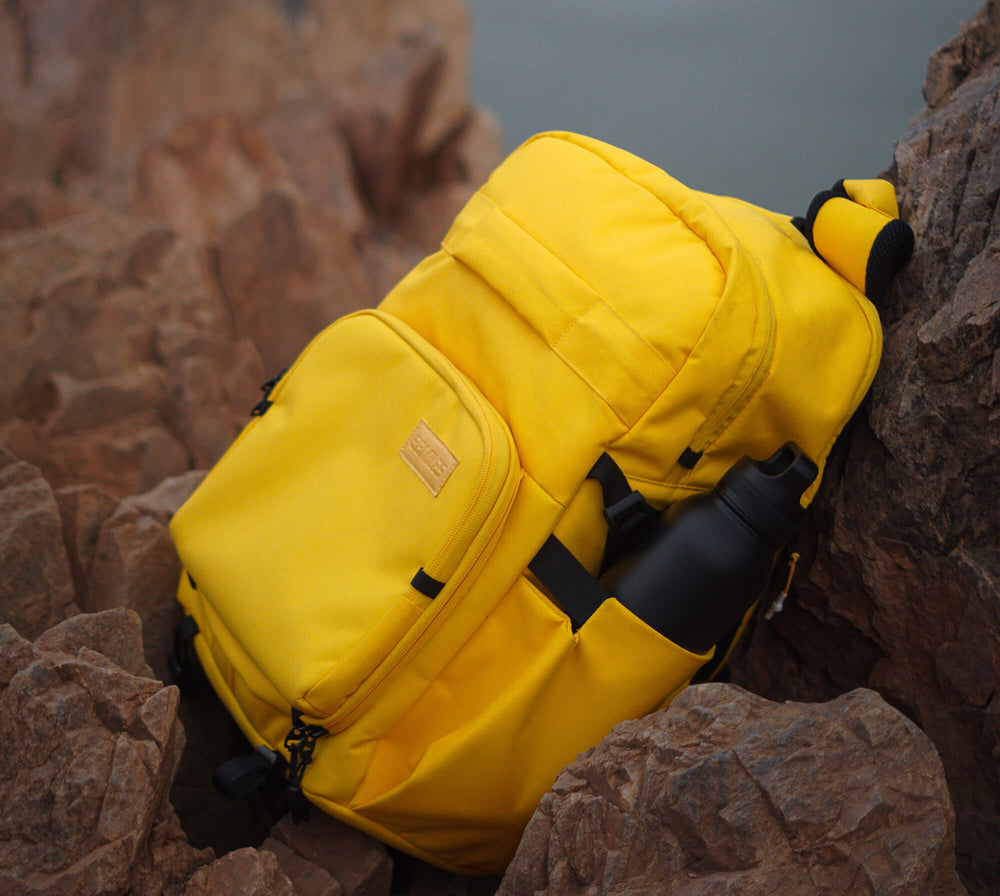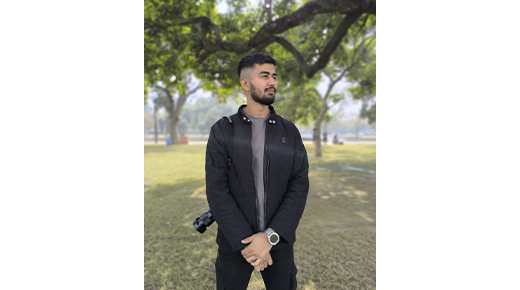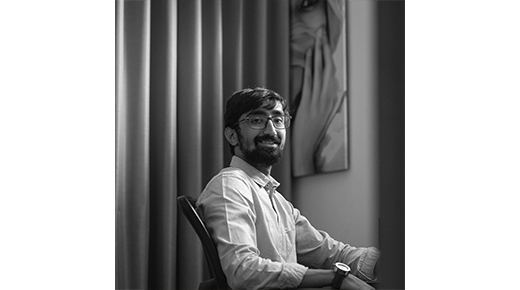From IT Director to Wildlife Whisperer: The Photographic Journey of Shuvadip Som

Showcase is an effort by 58Miles to bring beautiful journeys of some of the amazing photographers of India & aboard . You will read about their journey , techniques , style and can see the outcome of their art in stunning frames. We asked them some questions to deep dive in to space and here we are....
Introducing 58Miles showcase photographer, Shuvadip Som from Pune
Can you tell us a bit about your background and how you got started in photography?
My photography journey began when I passed class 10th with flying colors, and my granddad gifted me a point-and-shoot camera. This simple, thoughtful gift sparked a passion in me that has shaped my career and life. That camera taught me to see the world differently, capturing moments and emotions in a way I never imagined possible.
Professionally with a background in Information Technology with an experience of 24 years, I work in an MNC as an IT Director. I bring a unique perspective to photography as my passion understands the nuances of modern photography equipment, enhancing my ability to create compelling visual stories.

What inspires your photography, and how do you choose your subjects or themes?
My photography is inspired by the beauty of everyday life, the emotions that moments evoke, and the stories that objects and people can tell. However, my true passion lies in wildlife photography. The natural world, with its raw beauty and untamed creatures, captivates me deeply. The unpredictability of wildlife and the challenge of capturing animals in their natural habitat fuel my creative drive.
When choosing subjects or themes in wildlife photography, I seek out environments where I can observe and photograph animals in their true essence. I am particularly inspired by the resilience and grace of wildlife, the intricate behaviors, and the symbiotic relationships within ecosystems. Themes of survival, freedom, and the delicate balance of nature are central to my work.
Bird photography holds a special place in my heart. Birds, with their vibrant colors, delicate plumage, and graceful movements, offer endless opportunities for captivating images. The diversity of bird species and their varied habitats make every birding expedition unique and exciting. Capturing the elegance of a bird in flight, the precision of a hunting raptor, or the subtle beauty of a warbler or a sunbird perched on a branch requires patience and keen observation.
I am particularly fascinated by kingfishers, with their stunning plumage and incredible fishing skills. Photographing their swift dives and precise catches is both challenging and rewarding. Owls, with their enigmatic presence and silent flight, offer a mysterious allure. Capturing their nocturnal activities requires special techniques and a deep understanding of their behavior.
Shorebirds, with their migratory journeys and delicate interactions along coastlines, symbolize the interconnectedness of global ecosystems. Documenting their lives offers insights into the health of our shorelines and the impact of environmental changes. Grasslands, with their vast open spaces and diverse avian inhabitants, provide a rich tapestry for bird photography. From the stealthy movements of ground-dwelling birds to the soaring flights of raptors, grasslands are teeming with life.
By focusing on wildlife, especially birds, I strive to raise awareness about the beauty and fragility of our natural world, hoping to inspire others to appreciate and protect it. Through my lens, I aim to tell stories that evoke a sense of wonder and connection to the wild, encouraging a deeper appreciation for the avian world.

What has been your most memorable photography project or shoot, or any inspiring story around it, and why?
One of my most memorable photography projects was capturing the elusive and critically endangered Bugun Liocichla. With less than 100 individuals left in the world, these birds are found exclusively in the remote forests of Eaglenest Wildlife Sanctuary in Arunachal Pradesh, India. The opportunity to photograph such a rare and shy species was both challenging and profoundly inspiring.
The Bugun Liocichla is known for its vibrant plumage and elusive nature, making it a difficult subject to capture. These birds are extremely wary of human presence, requiring a great deal of patience, stealth, and understanding of their behavior. I spent two days in the forest, waiting for the perfect moment to photograph these beautiful creatures.
The experience was humbling and exhilarating. Witnessing the Bugun Liocichla in its natural habitat, hearing its unique calls, and observing its interactions within the ecosystem deepened my appreciation for the delicate balance of nature. The project reinforced the importance of conservation efforts and the need to protect such rare species and their habitats.
This shoot was not just about capturing images but about connecting with a species on the brink of extinction and bringing attention to its plight. The images I captured aim to inspire others to value and protect our planet's biodiversity. The project remains a highlight of my career, reminding me of the power of photography to tell important stories and drive conservation efforts. A picture of Bugun Liocichla below.

What is your photography kit? or we would say, what is in your camera bag?
My camera bag is equipped with a versatile and reliable kit tailored for wildlife photography, ensuring I'm prepared for any situation. At the heart of my setup is the Nikon D850 camera, paired with a Nikon 500mm f/5.6 PF lens. To extend my reach, I frequently use a 1.4x teleconverter. For added flexibility, I carry a backup bridge camera, the Nikon Coolpix P950, known for its impressive zoom capabilities.
Given my frequent trips to remote locations where electricity can be scarce, I always pack three extra batteries for my camera. I also bring along a backup lens, the Sigma 150-600mm f/6.3 Contemporary, which offers excellent reach and versatility. My kit includes plenty of fast storage cards to ensure I never miss a shot, and a strong yet lightweight torch for navigating in low-light conditions.
To stay powered up, I carry a robust 30,000 mAh power bank, along with my laptop and an external hard drive for immediate photo backups. For weather challenges, I include a camera rain cover and a personal raincoat. My camera battery chargers are essential, and I use a bean bag for stable shots, with a tripod accompanying me on some trips for added stability.
This comprehensive kit ensures I'm ready for any photographic opportunity, allowing me to capture the beauty and intricacies of wildlife, no matter where my adventures take me.

What advice would you give to photographers who are just starting out and looking to make a name for themselves?
For photographers just starting out and looking to make a name for themselves, my most important piece of advice is to remember that it's the person behind the camera who truly makes the difference, not the equipment. While having good gear can enhance your capabilities, it's your vision, creativity, and dedication that will set you apart.
First, focus on mastering the basics of photography. Understand the principles of composition, lighting, and exposure. Spend time practicing and experimenting with different techniques to develop your own style. Key to this is mastering the exposure triangle—aperture, shutter speed, and ISO. Balancing these three elements will allow you to capture well-exposed images in various lighting conditions.
Next, be patient and persistent. Building a reputation in the photography world takes time and consistent effort. Keep shooting regularly, even if the results aren’t perfect at first. Learn from your mistakes and continuously strive to improve. Seek constructive feedback from more experienced photographers and be open to learning from them.
Additionally, immerse yourself in your chosen subject matter. Whether it's wildlife, portraits, landscapes, or street photography, understand the nuances and stories behind what you are photographing. This depth of knowledge and passion will shine through your work.
Networking is also crucial. Connect with other photographers, join photography groups or clubs, and participate in competitions. Share your work on social media and create an online portfolio to showcase your best shots.
By focusing on your skills, staying dedicated, and continually learning, you can carve out your niche and make a name for yourself in the photography world.
Below is a picture of the Exposure triangle. (Screenshot from John Whitehead photography tutorial videos)

You can find Shuvadip Som on :
Instagram : shuva.wildlifephotographer



